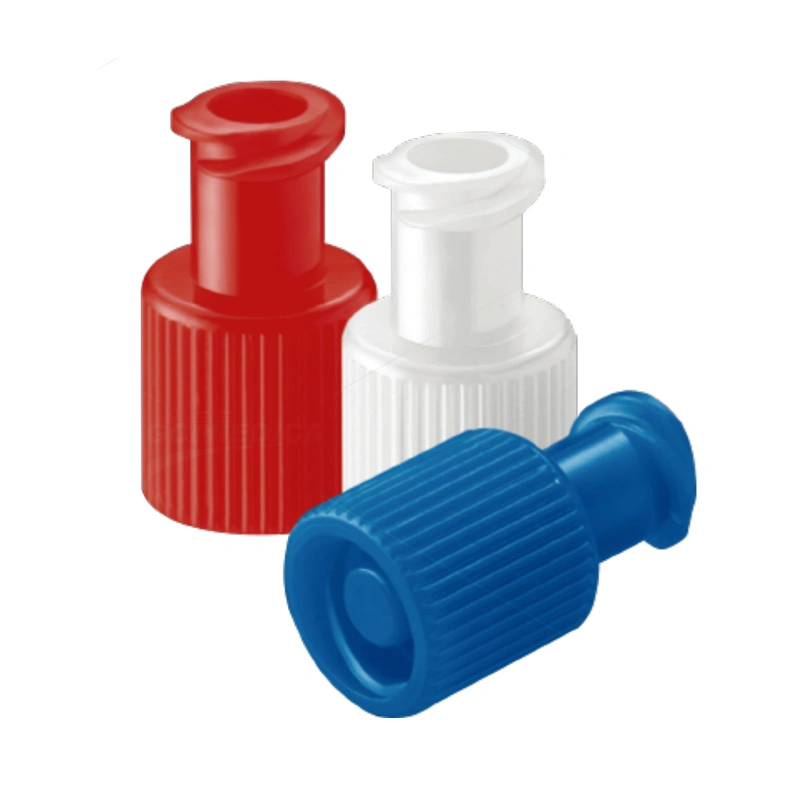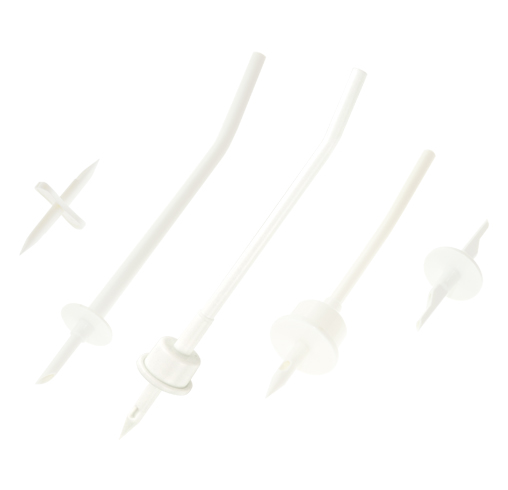-
Laparoscopic & Endoscopic Products
-
Laparoscopic Procedures
- Heated Insufflation Tube
- Laparoscopic Smoke Filter
- High FLow CO2 Laparoscopic Insufflation Filter Tube Set
- Veress Needle
- High Flow Heated Insufflation Tube
- Arthroscopy Irrigation Set
- Disposable Bladeless / Bladed Trocar with Thread / Balloon
- Disposable Wound Protector
- Disposable Height Changeable Wound Protector
- Retrieval Bag
- Laparoscopic Suction Irrigation Set
- Laparoscopic Insufflator
- Endoscopy Care and Accessories
-
Laparoscopic Procedures
- Respiratory & Anesthesia
- Cardiothoracic Surgery
- Gynaecology
-
Urology
- CathVantage™ Portable Hydrophilic Intermittent Catheter
-
Cysto/Bladder Irrigation Set
- M-easy Bladder Irrigation Set
- B-cylind Bladder Irrigation Set
- S-tur Bladder Irrigation Set
- S-uni Bladder Irrigation Set
- B-uro Bladder Irrigation Set
- Premi Bladder Irrigation Set
- J-pump Bladder Irrigation Set
- J-tur Bladder Irrigation Set
- H-pump Bladder Irrigation Set
- Sup-flow Bladder Irrigation Set
- Maple Irrigation Set
- Peony Irrigation Set
- Nelaton Catheter
- Urinary Drainage Bag
- Urinary Drainage Leg Bag
- Enema Kits
- Sitz Bath Kits
- Click Seal Specimen Container
- Silicone Male Catheter
- Spigot Catheter and Adaptor
- Sandalwood Irrigation Set
- Freesia Irrigation Set
- Daffodil Irrigation Set
- Single-Use Digital Flexible Ureteroscope
- Enteral Feeding Products
- Dental
- Fluid Management
- Warming Unit and Warming Blanket
-
Operating Room Necessities
- Nasal and Oral Sucker
- Disposable Medical Equipment Covers
- Magnetic Drape / Magnetic Instrument Mat
- Suction Handle
-
General Surgery
- Perfusion Atomizer System
- Gastric Sump Tube
- Surgical Hand Immobilizer / Lead Hand for Surgery
- Administration Set for Blood
- Ear/Ulcer Syringe
- Bulb Irrigation Syringe
- Toomey Irrigation Syringe
- Mixing Cannula
- Basin Liner/Basin Drape
- Medical Brush
- Sponge Stick
- Suture Retriever
- Needle Counter
- Disposable Calibration Tube
- Heparin Cap
- 100ML Bulb Irrigation Syringe
- Scleral Marker
- Surgical Light Handle
- Mucosal Atomization Device
- Durable Medical Equipment
- Patient Handling System
- PVC-FREE Medical Device
- Emergency
-
Patient Air Transfer Mattress Online WholesaleDec 17 , 2024
-
Cystoscopy Irrigation Set Online Wholesale | GCMEDICADec 17 , 2024
-
Patient Warming Device and Blanket Online wholesaleDec 16 , 2024
-
CathVantage™ Twist Intermittent Catheter | GCMEDICASep 20 , 2024
-
Single-Use Digital Flexible Ureteroscope | GCMEDICASep 20 , 2024

Three-way Stop Cock
Gcmedica's Three-Way Stop Cock, an essential accessory for intravenous therapy systems. Crafted for precision, our medical valve offers unparalleled fluid control, ensuring safe and efficient patient care. Featuring a leak-proof design and compatibility with a wide range of medical devices, our Three-Way Stop Cock is the preferred choice for healthcare professionals seeking reliability and ease of use. Its durable construction guarantees long-term performance, making it a cost-effective solution for medical settings.
Features of Three-way Stop Cock
Used for pressure infusion and blood pressure monitoring
Made from non-toxic, medical-grade PVC
Has two female luer lock ports and one male luer lock port, with a rotatory lock for safe connection to other devices
Three-arm handle for smooth and easy operations
Minimum residual fluid volume
Specification of Three-way Stop Cock
| No. | Product code | Description |
| 01 | GC6031A01 | With male slip |
| 02 | GC6031B01 | With male luer lock |
Structure and Design
A 3-way stopcock valve typically consists of a small, cylindrical valve body with three ports (inlets/outlets) arranged in a T-shape. These ports allow connection to IV lines or other medical devices. The stopcock's central component is a lever or a rotating mechanism that can be turned to open or block the flow of fluids through the ports. This mechanism is usually marked with indicators to show the direction of flow or which port is open or closed.
The materials used for manufacturing 3-way stopcock valves are critical for ensuring biocompatibility, chemical resistance, and minimal interaction with the fluids or drugs passing through them. Common materials include medical-grade plastics like polycarbonate, polyvinyl chloride (PVC), and sometimes metals for specific applications that require sterility and durability.
Functionality
The primary function of a 3-way stopcock is to control fluid flow with high precision. By turning the lever or handle, healthcare professionals can select which ports are open or closed, thereby directing the flow of fluids between various lines connected to the patient. This allows for:
Multiple Infusions: Simultaneous administration of fluids or medications from different sources through a single IV access point.
Selective Blocking: Ability to temporarily stop the flow from one source while allowing it from another, without disconnecting the setup.
Mixing of Medications: Facilitating the mixing of two fluids or medications before they enter the patient's bloodstream.
Control of Flow Rate: Although not a primary function, by partially opening or closing the ports, it can somewhat regulate the flow rate.
Applications
3-way stopcock valves find applications in a wide range of medical settings, including:
Intravenous Therapy: For administering IV fluids, medications, blood products, and nutritional substances.
Anesthesia: In anesthesia delivery systems for controlling and mixing anesthetic agents.
Critical Care: In intensive care units (ICUs) for managing multiple infusions and critical drug delivery.
Diagnostic Procedures: In procedures requiring the injection of contrast agents or withdrawal of samples without removing the needle.
Surgical Procedures: For precise control of fluids or gases during surgeries.
Conclusion
3-way stopcock valves are indispensable in modern healthcare for their versatility and precision in fluid control. Their design allows for easy operation, while their materials ensure safety and compatibility with a wide range of medical substances. As medical technology advances, the design and functionality of these valves continue to evolve, enhancing patient care and treatment outcomes.





